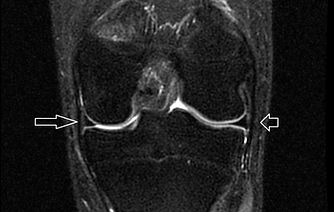
Another Blog Article by David E. Smalley, M.D.
This article is on a principle of pain relief that is covered much more in depth in the book, The Miracle of Pain. The content is educational and should not be used as medical advice.
The photos below emphasize the wonders and miracles of nature around us and within us.
November 30, 2020 — Knee Joint Cartilage Healing?
There are three knee exercises that are often a good starting point for knee chronic pain and other knee problems, such as a meniscus tear and arthritis of the cartilage joint surfaces. Details for the three basic knee exercises are in my book, The Miracle of Pain. They are usually done while sitting, 1) Straight Leg Raise, 2) Knee to Chest, 3) Quadricep Setting.
I have known for years that these exercises often need to be adjusted up or down in difficulty for each person and each knee. If there is one of the three exercises that causes pain or popping, simple modifications can make it easier or just different enough to stop any pain or popping.
If all modifications for a knee exercise do not stop the pain or popping, which is rare, that one exercise should be held for later use after a few weeks. If all three exercises cause pain, often the person needs to do them easier or keep the amount of motion smaller. If there is swelling, elevating the knee at or just above the heart level often will usually decrease the swelling and stop the pain with exercise.
If there is swelling, doing exercises that cause pain will often damage joint surfaces. The extra fluid in the joint makes the joint surfaces softer and more susceptible to damage. Joint surface damage can be in the form of softening, cracks or fissures, flaps or missing pieces.
After I published my book, I found three new, valuable knee exercise variations that can help cartilage surface healing. They work because there is less stress on the joint with a change of body position. The altered position allows the joint to move with much less compressive force on the joint surfaces.
The first two exercise variations are standing and horizontal Knee to Chest. The first with standing instead of sitting is easier. For the second exercise, horizontal means lying flat on a couch, bed or floor. Then flex the hip and knee up by sliding the foot using a sock or other slippery surface to minimize resistance.

Straight Leg Raise, starting position

Straight Leg Raise repetitions

Knee to Chest, starting position

Knee to Chest repetitions

normal x-ray Left Knee, front
%25.jpg)
normal MRI Left Knee, front, medial meniscus at long arrow, lateral meniscus at short arrow
All joint surface cartilage damage needs protected motion and no swelling to be able to heal. The surfaces also need protection from activity that injures or damages them. Even when we are older, our bodies, including knee joint surfaces, are many times able to heal better than we realize. For that to happen, we have to pay attention to the details of simple exercise.
* * * * *
You bend the knee towards the chest in small sections, then relaxing partially. Each motion section is a repetition. Five to ten repetitions are enough, but do them often, again if there is no pain or popping.

normal x-ray Left Knee, side
The third is a Quadricep Setting with one knee over the other knee, also in a horizontal position. There is a slight bend in the knee to start with. Then the quadriceps, the front muscle in the thigh, is tightened to push the knee nearly straight.

normal x-ray Left Knee, kneecap